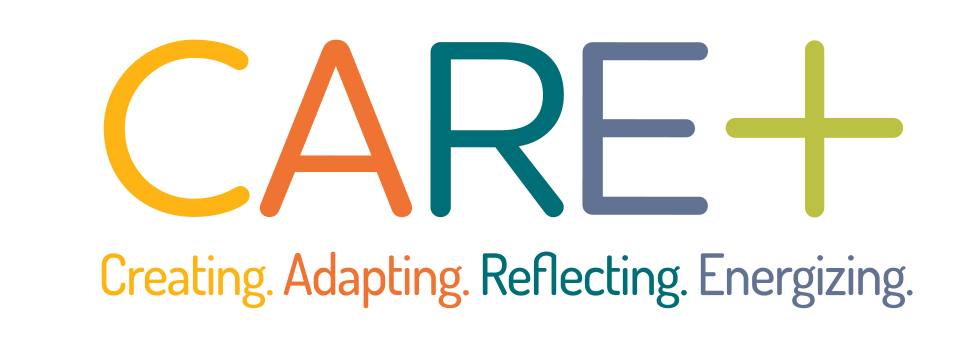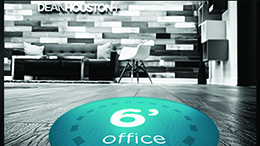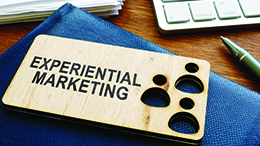After months of working from home, businesses are slowly beginning to transition their employees back to an office environment. While adjusting to new routines, teams must quickly adapt to new safety protocols and social distancing guidelines in order to be safe around others.
Because it is up to employees to comply with these new rules, challenges may arise even if people have good intentions. Returning to a familiar office environment may also mean returning to old habits, which can lead to forgetting new precautions and amplifying the risk of spreading infections.
As DeanHouston’s Emma Mendenhall stated in a recent DH+ INSPIRE podcast, “One thing I’ve noticed getting back into the office in person is that you fall into your old habits. You’re in a different environment, so you have to recalibrate yourself.”
In order to break these old patterns, visual cues and signs are helpful in subtly promoting the most recent safety guidelines and new sanitization practices.
Signage in the Office Environment
The CDC suggests that offices implement many new procedures in order to minimize the risk of employee exposure to COVID-19, including taking steps to physically separate employees and rearranging office flow. These tactics can be achieved through clear communication and visuals to make understanding the new protocols simple.
Signs are an easy way to visually demonstrate how employees should be moving through the office. The American Society of Safety Professionals (ASSP) also acknowledges the significant role that signs play in making workers aware of workplace conditions, which is a key factor in promoting a clean and sanitized environment.
Key Elements of Effective Signage
As signage and visual cues become more prevalent in offices, it is important to keep a few key factors in mind when choosing which signs to display. The ASSP states that signs should be simple and straightforward – this means easily understandable visuals and text that avoids lengthy, confusing messages.
Additionally, placement of visual cues is important, too. Place signs in or around an area that requires new safety or social distancing protocols, and ensure that they are easily readable to all who pass through. One example of the importance of sign placement is demonstrated through the newly suggested “6 feet apart” rule. Signage can easily demonstrate this distance in an office setting so communication and collaboration are still easily achievable in a safe manner.
Conclusion
Though it may be easy to fall into old habits, visual cues can serve as reminders for teams to comply with new safety protocols in the changing workplace environment. In order to simplify this process, Exhibit Logistics has created free, printable graphics available for download here.
These graphics serve as reminders for teams to self-screen, social distance and respect the comfort level of others within the office environment. Because ultimately, an environment built with the care and safety of others in mind leads to more comfortable teams and more productive and collaborative interactions.
To learn more about getting the tools and PPE equipment needed to help you successfully reopen your office, please visit exhibitlogistics.com.
How Signage Provides Much-Needed Structure for our Reopening
Topics: COVID-19, DeanHouston, DH INSPIRE Newsletter, Signage
How the '4-10 Plan' Impacted the DH+ Reopening Approach
Businesses are getting creative implementing a safe, methodical reopening process after months of work-from-home. At DeanHouston, we’ve spent a considerable amount of time working to get our teams back together in the safest way possible.
To ensure social distancing, we decided on a 4-10 reopening plan.
What’s 4-10?
The 4-10 is a rotational plan dividing the office into two groups so only 50% of our staff is in the office at any one time (while wearing their PPE, of course).
Group 1 will work 4 days in the office (Monday-Thursday) and then 6 days from home. When Group 1 is working from home, Group 2 will rotate and work 4 days in the office (Monday-Thursday) and 6 days from home.
Both groups will work from home on Fridays.
Where’d the Idea Come From?
This reopening strategy has been recommended by The New York Times as one of the most effective return to the office tactics. According to a recent New York Times article, the 4-10 is recommended for many reasons, one being the possibility the 4-10 provides to “exploit” a key property of the virus: “its latent period, the three-day delay on average between the time a person is infected and the time he or she can infect others.”
The 4-10 also allows us to take advantage of the virus’s “weak spot” by reducing the density of people at work and weaken the transmission of the virus.
The Most Important Thing to Remember
Even though the 4-10 is one of the best strategies to get some normalcy back into our lives, it is essential that we continue to monitor the local situation and prepare for the local government to reverse phases if infection rates begin to rise again.
Flexibility and nimbleness will be key to navigating the future of this pandemic.
To learn more about getting the tools and PPE equipment needed to help you successfully reopen your office, please visit exhibitlogistics.com.
Topics: COVID-19, DeanHouston, DH INSPIRE Newsletter, 4-10 Plan
Navigating Experiential Marketing During COVID-19
The spread of coronavirus has caused event cancellations worldwide, leaving the experiential marketing industry with no other option than to adapt to a new world of remote work and social distancing. While pivoting and adapting to new processes can be difficult, we have found that turbulence brings new opportunities, especially in experiential marketing.
Experiential marketing, also called engagement marketing, is a marketing strategy that invites an audience to interact with a business in order to create experiences between the brand and consumer. This marketing tactic provides an opportunity for your brand to leave an impression on consumers while getting at the heart of what motivates people: their emotions. For that reason, all good experiential campaigns focus on people, aiming to challenge, inspire and motivate. Examples include live experiences, sampling, roadshows, festivals, social content, PR stunts and partnerships.
At DeanHouston, putting people first is what we do best. That’s why we excel within the arena of experiential marketing. But when COVID-19 was causing disruptions and cancellations to most in-person experiential events, we knew we had to begin paving a new path and quickly innovate new offerings for clients in order to stay ahead of the curve. For an answer, we decided to take our experiential marketing virtual – creating virtual events like digital trade shows.
We’re not going to lie; shifting from executing in-person experiential marketing events to virtual events isn’t always easy. However, using the right approach and following a few best practices is key to getting the most out of your virtual experiential events.
Put Your Attendees First
Determine what attendees need and want, and design your event in order to provide them with the best ROI. Make sure attendees feel like you’re investing in them even though your event is virtual.
Keep It Interactive
Provide attendees with a fully immersive experiential marketing experience by gamifying your virtual event. In other words, take your content and make it fun by providing a way for your attendees to interact with your information so they stay attentive and interested.
Don’t Stress About Production
Consumers aren’t looking for a perfectly staged event. Yes, the event should run smoothly, but consumers may feel disconnected if the event is overly produced; just be authentic and entertaining.
Create Scalable Experiences
Experiences vary in size and scale. Don’t be afraid to customize an experience for a smaller audience than what you normally have during an in-person event.
To learn more about how you can turn your experiential marketing virtual, please contact your DeanHouston account/marketing manager.
Topics: COVID-19, DeanHouston, DH INSPIRE Newsletter, Experiential Marketing




